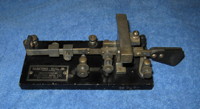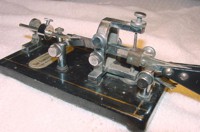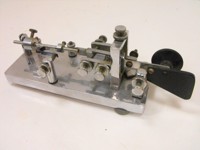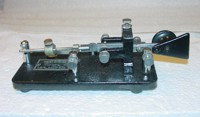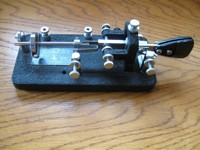Electro-Bug & Speed-X
Speed-X bugs are easily recognizable from the shape of the frame that has a T-Bar handle built into the top. But before Speed-X, a company named Electro Manufacturing in Fresno California began making bugs with this distinctive carrying handle built into the frame starting in 1927. They made a bug called the Electro Bug, which featured a solenoid that allowed the key to produce automatic dots.
They also produced a model called the Electro Bug Junior that is the same as the standard Electro Bug model minus the solenoid.
In 1934 Steward Johnson bought the company and moved it to San Francisco where he changed the name to Speed-X Radio Manufacturing Co.
Most of the early Speed-X keys had no nameplates, but some of the early keys were sold under the name San Francisco Radio Exchange. Those keys did have labels. Early Speed-X keys were also sold through Sears & Roebuck.
In 1937 Johnson sold the company to Les Logan. It was during this time that Speed-X created the majority of their different models.
Les Logan then sold Speed-X to EF Johnson in 1947. They continued to make the same bug designs as Les Logan but changed the frame design on the 501 model to a Vibroplex Lightning bug style triangular plate assembled frame. Also they introduced a new pendulum weight that used a clip rather than a set screw, which was easier to adjust. EF Johnson continued to make bugs until the company was sold to William Nye in 1972.
It's interesting to note that the frames on Les Logan keys were made of cast zinc, which is prone to cracking and is somewhat brittle. So it's common to encounter Logan Speed-X keys where the T-Bar handles are broken.
(Click on the pictures below to see larger versions of the photo)
Electro Bug (1927-1934)
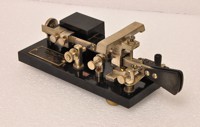 |
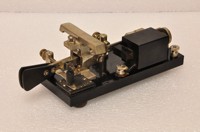 |
 |
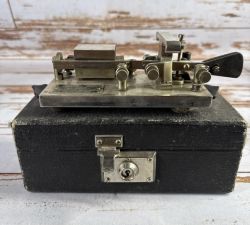 |
A distinctive key with a large solenoid to allow the operator to send automatic dots. There is also an adjustment that allows the dot speed to be changed.
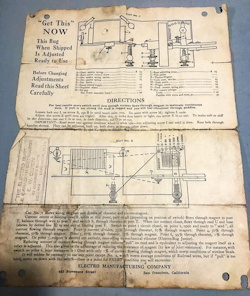 |
The instruction sheet for adjusting and operating the Electro Bug
Electro Bug Junior (1927-1934)
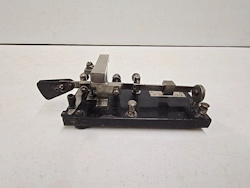 |
Looks just like the Electro Bug without the solenoid so it operates just like a Vibroplex.
Early Speed-X Bug (San Francisco Radio Exchange - 1934)
The earliest Speed-X keys had black lacquer finish bases. Some also had what is called a "reverse frame" where the frame "faces" the operator; that is, the adjustment screws are on the paddle side of the frame. This particular key to the left has a reverse frame.
Model 500
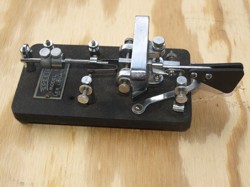 |
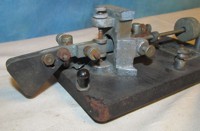 |
|---|
Logan's first key with the T-Bar frame. The key pictured at the right is one where the T-bar handle had broken off.
Model 501
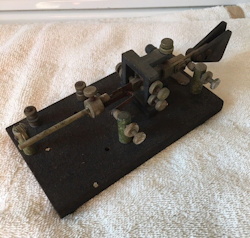 |
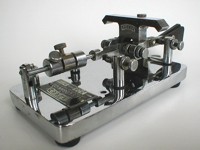 |
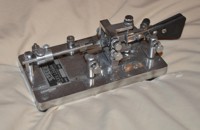 |
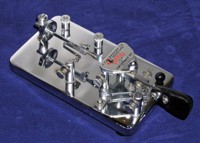 |
Same as the Model 500 except with larger 3/16" contacts that are replaceable. This was called the Professional Model. On the far left is the early Steward Johnson Model 501 with the "reverse frame". The next key to the right is the standard T-Bar Model 501 by Les Logan. To the right of that is the "reverse frame" Les Logan variety that does not use the T-bar handle. On the far right is the more recent EF Johnson Model 501with the Vibroplex Lightning Style assembled frame.
Model 510
 |
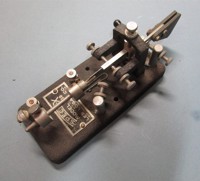 |
|---|
A smaller key with narrower base. The early Steward Johnson keys were similar in size to a Vibroplex Blue Racer and had a black crackle paint finish. The Les Logan version has a small base but the base is cast zinc rather than steel.
Model 511
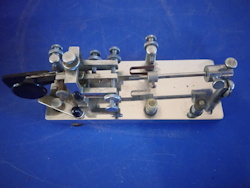 |
This key looks pretty much the same as the Steward Johnson Model 510 but is chrome plated. I don't think Les Logan offered this model.
Model 515
The Model 515 was a lower cost version of the 500
Model 520
The Model 520 was similar to the 515 but was made by EF Johnson.

